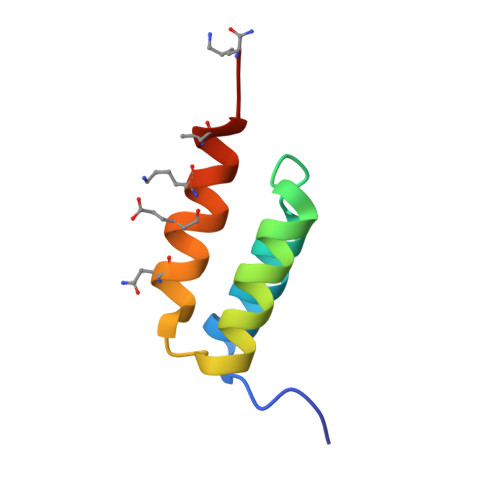Implications of the unfolded state in the folding energetics of heterogeneous-backbone protein mimetics.
Santhouse, J.R., Leung, J.M.G., Chong, L.T., Horne, W.S.(2022) Chem Sci 13: 11798-11806
- PubMed: 36320921
- DOI: https://doi.org/10.1039/d2sc04427g
- Primary Citation of Related Structures:
7TIO, 7TIP, 7TIQ, 7TIR, 7TIS - PubMed Abstract:
Sequence-encoded folding is the foundation of protein structure and is also possible in synthetic chains of artificial chemical composition. In natural proteins, the characteristics of the unfolded state are as important as those of the folded state in determining folding energetics. While much is known about folded structures adopted by artificial protein-like chains, corresponding information about the unfolded states of these molecules is lacking. Here, we report the consequences of altered backbone composition on the structure, stability, and dynamics of the folded and unfolded states of a compact helix-rich protein. Characterization through a combination of biophysical experiments and atomistic simulation reveals effects of backbone modification that depend on both the type of artificial monomers employed and where they are applied in sequence. In general, introducing artificial connectivity in a way that reinforces characteristics of the unfolded state ensemble of the prototype natural protein minimizes the impact of chemical changes on folded stability. These findings have implications in the design of protein mimetics and provide an atomically detailed picture of the unfolded state of a natural protein and artificial analogues under non-denaturing conditions.
Organizational Affiliation:
Department of Chemistry, University of Pittsburgh Pittsburgh PA 15211 USA ltchong@pitt.edu horne@pitt.edu.


















